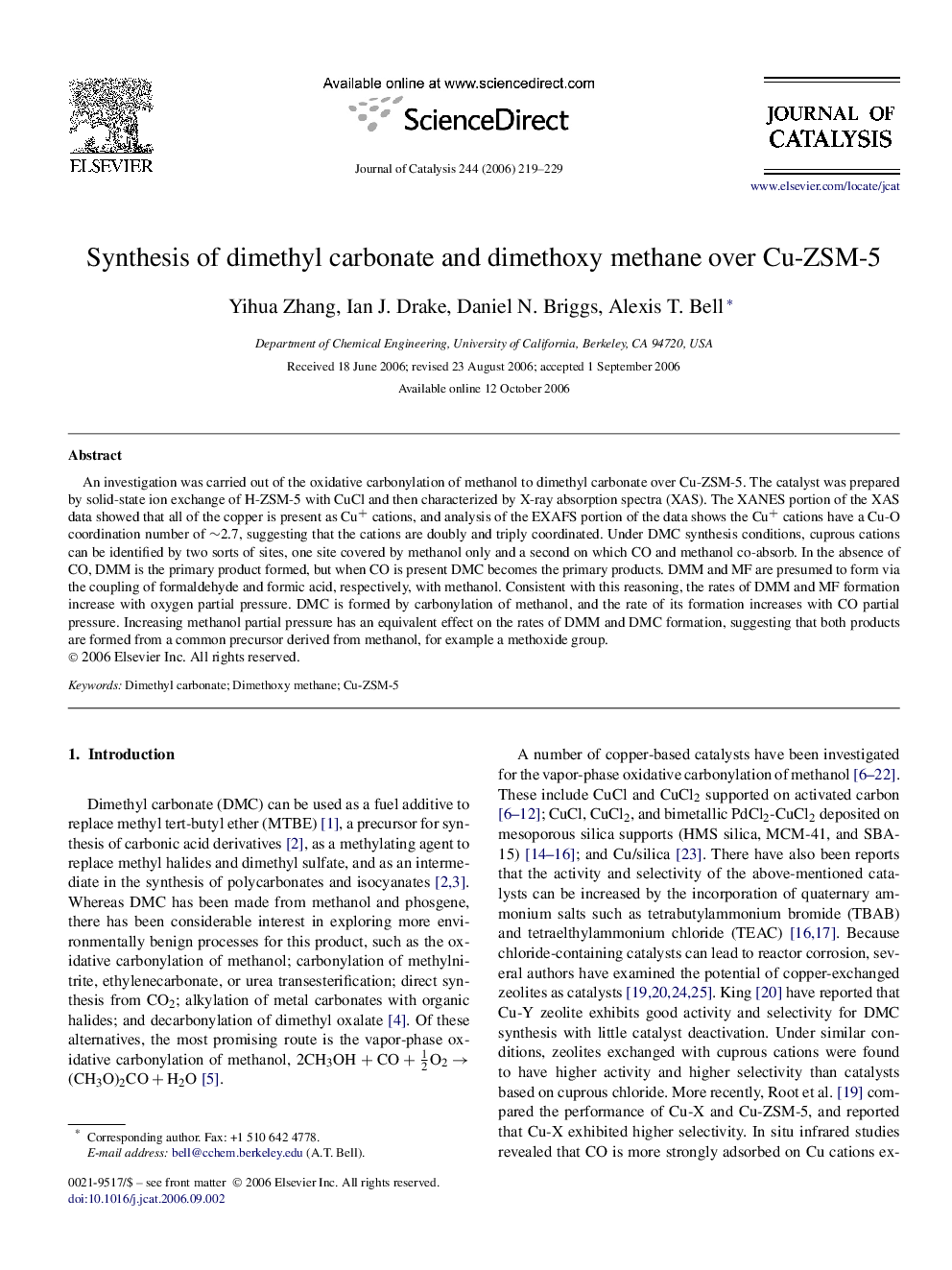| Article ID | Journal | Published Year | Pages | File Type |
|---|---|---|---|---|
| 62962 | Journal of Catalysis | 2006 | 11 Pages |
An investigation was carried out of the oxidative carbonylation of methanol to dimethyl carbonate over Cu-ZSM-5. The catalyst was prepared by solid-state ion exchange of H-ZSM-5 with CuCl and then characterized by X-ray absorption spectra (XAS). The XANES portion of the XAS data showed that all of the copper is present as Cu+ cations, and analysis of the EXAFS portion of the data shows the Cu+ cations have a Cu-O coordination number of ∼2.7, suggesting that the cations are doubly and triply coordinated. Under DMC synthesis conditions, cuprous cations can be identified by two sorts of sites, one site covered by methanol only and a second on which CO and methanol co-absorb. In the absence of CO, DMM is the primary product formed, but when CO is present DMC becomes the primary products. DMM and MF are presumed to form via the coupling of formaldehyde and formic acid, respectively, with methanol. Consistent with this reasoning, the rates of DMM and MF formation increase with oxygen partial pressure. DMC is formed by carbonylation of methanol, and the rate of its formation increases with CO partial pressure. Increasing methanol partial pressure has an equivalent effect on the rates of DMM and DMC formation, suggesting that both products are formed from a common precursor derived from methanol, for example a methoxide group.
